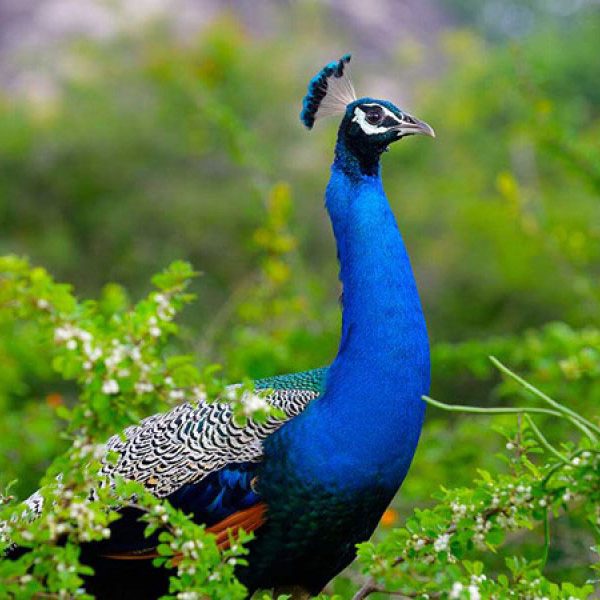Places to see Elephants in Sri Lanka
Places
to see Elephants
Asian
Elephants are one of the few remaining mega-herbivorous species in the world
and they happen to be the most loved mammal in Sri Lanka. Despite the ongoing
conflict between man and Elephant in the rural areas, everyone remains to be
fascinated in observing their intelligent behavior. The Sri Lankan Elephant
population is about 2500 – 3000 and they hold great national value as a major
tourist attraction. There are many places to see elephants around the country
which have been declared as sanctuaries for these majestic animals as well as
several other species. A large number of Elephants in a relatively small land
brings a high chance of sightings. Visits to these areas are always rewarding
for wildlife enthusiasts and can be experienced in numerous Sri Lanka holiday
packages!
Pinnawala
Located in
the central hills of Kegalle, the Pinnawala Elephant Orphanage was established
in 1975 by the Department of Wildlife Conservation. Spreading across 24 acres,
it is a special place where abandoned and disabled wild elephants get care and
protection. Being an excellent breeding center, the Orphanage has witnessed the
birthing of twenty-three elephants since 1984, a huge conservation achievement.
It also has the greatest herd of elephants in captivity in the world.
The
elephants at Pinnawala are fed around 76 kg/170 lb of green manure and around 2
kg/4.4 lb of rice bran and maize daily, the adorable infants under the age of
three are bottle fed by caregivers or volunteers. The adult elephants work in
the orphanage itself, earning their keep by helping with various chores, such
as collecting food. After meals, they are taken to the Maya Oya River twice a
day for a leisurely bath to cool off in the shallow water. The main attraction
is the opportunity to observe the bathing elephants from the broad river bank
as they play and splash about. The orphanage is very popular among local and
foreign tourists and all admission fees are used to look after the elephants.
Udawalawe
Udawalawe
was declared a national park in 1972. Spanning an astounding 30, 800 hectares,
it is a former teak plantation that is now home to an estimated 400-500
elephants as well as other animals and birdlife. They graze in scattered herds
in the grasslands and scrub jungle, amongst the remnant teak trees, quenching
their thirsts and cooling off in the Udawalawe Reservoir. Excursions into the
park in the back of a jeep are available with a guide. The best times for these
safari rides are early mornings and early evenings as the elephants are most
likely to be out in the open, grazing and interacting with one another on the
marshy banks of the reservoir.
There is an
orphanage nearby which takes care of elephants that have been injured or
abandoned and baby elephants that have lost their way in the park. After being
cared for, they are released back into the park as adults.
Minneriya
Minneriya
National Park was designated as a wildlife sanctuary in 1938 to protect the
catchment of the Minneriya tank and the wildlife of the surrounding area.
Usually during the year July to August, there are between 150-200 elephants
living in the park, however, during the dry season from, an extraordinary event
known as the ‘elephant gathering’ occurs. Elephants from surrounding areas,
such as Wasgamuwa National Park, Matale and Polonnaruwa migrate to Minneriya in
search of food, water, and shelter.
The
gathering is a wonderful opportunity for wildlife enthusiasts and travelers to
observe the social behavior of elephants in the wild as they bathe and play in
the receding waters of the Minneriya tank and graze on the fresh grassland
sprouts which are left behind. The gathering is one of the most unforgettable
and a fantastic event in the international wildlife calendar.
Wasgamuwa
Wasgamuwa
National Park is a dedicated area of conservation and is often said to be the
most beautiful national park in Sri Lanka and the best place to see wild
elephants in their natural habitat. Located in the eastern part of the country,
just south of Minneriya National Park, Wasgamuwa shows historical evidence that
it has been inhabited by man during the ancient Sinhala kingdoms in BC. The
elephants found in this area are slightly more fierce and dangerous as they are
less accustomed to humans than other elephants found in Sri Lanka so visitors
are strongly advised to be cautious when observing a herd within the park.
Elephants
can also be found in all the other dry zone national parks in Sri Lanka such as
Yala and Wilpattu. Numerous conservation projects have been established by Sri
Lanka’s top Wildlife Conservation Societies to encourage their population
growth and to minimize the human-elephant conflict in rural areas.
Pachyderm
Paper
A company in
Sri Lanka has recently found ways to recycle elephant waste turning the project
into a successful conservation starter which not only looks at elephants as
gentle giants but also as mobile paper factory on legs. Elephants ingest a
large amount of fibre during meals which is then pulped in the stomach and
excreted in hot fresh blobs of dung. The dung is then manufactured into paper after
being, boiled, sanitized and dried in the sun. The result is unique,
artistically textured stationary which can be varied according to the
elephants’ diet. More than just a conservation innovation, pachyderm paper
could prove an important source of income to the villagers thus a significant
help in human-elephant conflict.
#srilankaprivatetourswithdriver #srilankaprivatetours #privatedriverhire#tourswithprivatedriver #srilankatourswithprivatedriver#privatetouroperatorsrilanka #srilankaprivatetransfers#privatecarrentalcolombo #srilankaprivatedaytours#privatecarwithdriverinsrilanka #srilankadriverhire #bestdestinationin2019#srilankatravledestinations #nationalparksinsrilanka #yalanationalpark#minneriyanationalpark #kaudullanationalpark #wilpaththunationalpark#udawalawenationalpark #elephantsinsrilanka






Comments
Post a Comment